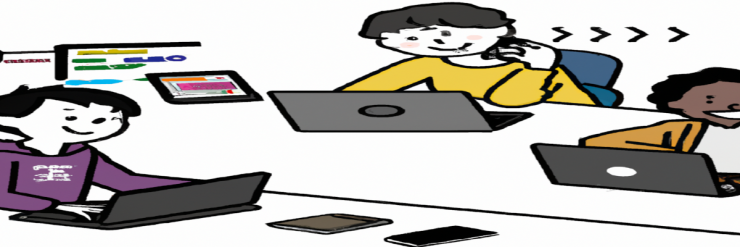Cybersecurity Essentials: Protecting Your Digital Footprint

Mastering Cybersecurity: Your Digital Safety Guide
In today's hyper-connected digital world, safeguarding your online presence is more crucial than ever. From personal data to sensitive financial information, our digital footprint holds a wealth of valuable data, making it an attractive target for cybercriminals. As technology advances, so do the methods employed by malicious actors, underscoring the necessity of understanding and implementing cybersecurity essentials to protect your digital identity and assets.
A. Stay Updated:
Keeping your software, operating systems, and applications updated is the first line of defense against cyber threats. Manufacturers frequently release patches and updates to fix security vulnerabilities. Failing to install these updates promptly can leave your devices and data exposed to potential attacks.
B. Use Strong, Unique Passwords:
Passwords are the keys to your digital kingdom. Creating complex, unique passwords for each of your accounts is essential. Utilize a mix of letters, numbers, and special characters, and avoid using easily guessable phrases or personal information. Consider using a reputable password manager to securely store and manage your passwords.
C. Enable Two-Factor Authentication (2FA):
Two-factor authentication adds an extra layer of security to your accounts. In addition to your password, 2FA requires a second form of verification, such as a fingerprint scan, a one-time code sent to your phone, or a hardware token. This feature significantly decreases the risk of unauthorized access, even if your password is compromised.
D. Educate Yourself on Phishing:
Phishing remains one of the most prevalent cyber threats. Cybercriminals use deceptive emails, messages, or websites to trick users into revealing sensitive information. Educate yourself on the common signs of phishing attempts, such as suspicious links, requests for personal information, or urgent messages. Verify the authenticity of any request before sharing any sensitive data.
E. Secure Your Wi-Fi Network:
Securing your home or office Wi-Fi network with a strong, unique password and encryption protocol, such as WPA2 or WPA3, is crucial. Additionally, avoid using public Wi-Fi for sensitive activities, as these networks are often unsecured and susceptible to interception by malicious actors.
F. Regularly Back Up Your Data:
Data loss can occur due to various reasons, including cyber attacks, hardware failure, or human error. Regularly backing up your data to an external hard drive, cloud storage, or a secure offsite location ensures that you can recover your important information in the event of an unexpected incident.
G. Monitor Your Digital Footprint:
Regularly monitor your online presence to identify any potential security risks. Review your social media privacy settings, limit the personal information you share online, and be cautious about the data you provide to third-party applications or websites.
H. Invest in Reliable Security Software:
Utilize reputable antivirus and anti-malware software to protect your devices from viruses, malware, and other online threats. Regularly scan your devices for any suspicious activity and keep your security software updated to defend against emerging threats.
I. Practice Caution with Downloads and Links:
Exercise caution when downloading files or clicking on links, especially from unknown or unverified sources. Malicious software can easily be disguised as legitimate files or links, making it crucial to verify the credibility of the source before initiating any downloads or clicking on any links.
J. Stay Informed and Vigilant:
Cybersecurity threats continually evolve, making it imperative to stay informed about the latest trends and practices. Regularly educate yourself on emerging cyber threats and best cybersecurity practices to ensure that your digital footprint remains well-protected.
Real-Life Examples
1. Stay Updated:
Example: Sarah's computer was infected with ransomware because she hadn't updated her operating system, leaving a vulnerability that the cybercriminal exploited.
2. Use Strong, Unique Passwords:
Example: John's email was hacked because he used a weak password that was easily guessed, compromising not only his email but also his other online accounts.
3. Enable Two-Factor Authentication (2FA):
Example: Emma's social media account remained secure even after her password was stolen because she had enabled 2FA, preventing the hacker from gaining unauthorized access.
4. Educate Yourself on Phishing:
Example: Mike avoided falling victim to a phishing scam when he received an email requesting sensitive financial information, recognizing that it had several spelling errors and an unusual email address.
5. Secure Your Wi-Fi Network:
Example: The Johnson family's home network was compromised because they had not set a strong password for their Wi-Fi, allowing a nearby hacker to gain unauthorized access to their personal data.
6. Regularly Back Up Your Data:
Example: Mark was able to recover his important documents after his laptop was stolen because he had regularly backed up his data to an external hard drive and a cloud storage service.
7. Monitor Your Digital Footprint:
Example: Amanda avoided potential identity theft after she realized her social media privacy settings were set to public, promptly changing them to private and limiting the personal information she shared online.
8. Invest in Reliable Security Software:
Example: Chris's computer remained protected from malware and viruses because he had installed reputable antivirus software and regularly updated it to defend against the latest threats.
9. Practice Caution with Downloads and Links:
Example: Jason's computer became infected with malware after he clicked on a suspicious link in an email from an unknown sender, highlighting the importance of verifying the credibility of sources before clicking.
10. Stay Informed and Vigilant:
Example: Lisa avoided falling victim to a new type of cyber attack because she regularly followed cybersecurity news and was aware of the latest trends and best practices to protect her digital identity and assets.
By implementing these cybersecurity essentials, you can significantly reduce the risk of falling victim to cyber attacks and protect your digital identity and data from unauthorized access. Safeguarding your digital footprint is not just a matter of personal security but a crucial step in contributing to a safer and more secure online environment for everyone.
